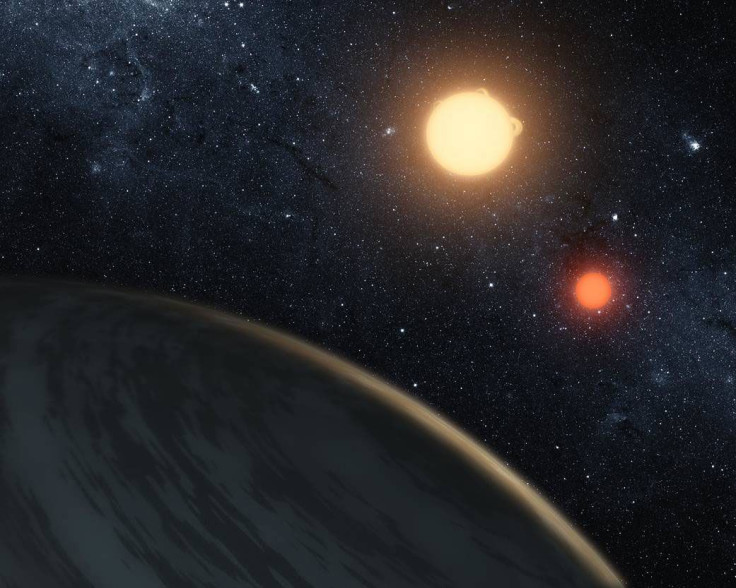Planets Orbiting Short-Period Binary Stars Can Be Thrown Into Space

A new study exploring binary stars – stellar bodies orbiting each other – and planets moving around them has revealed worlds involved in such systems are at risk of being ejected into space.
David Fleming, a student from University of Washington and the lead author of the study, posited the theory after taking a close look at short-term eclipsing binaries, or the system in which the orbital path of stars is so close to the line of sight, one star appears to cross the other’s path for a short while.
As bodies orbit closely taking 10 days or less, Fleming pondered over the tidal forces the stars exert over each other and how that may affect the whole star system.
To solve the mystery, he ran a series of computer simulations and found the forces in action “transport angular momentum from the stellar rotations to the orbits,” according to a statement from the university. This leads to slowed stellar rotations and an increased orbital period.
The forces expand the stellar orbit and transform it from eccentric or football-shaped into neat circles. This ultimately results in planets, which were originally sitting safe outside, being engulfed and thrown out of the system.
And this is not the only way of ejection, according to the team, there is also a region of instability, where the gravitational forces of the two stars compete. It’s “a region that you just can’t cross — if you go in there, you get ejected from the system,” Fleming said in the same statement. “We’ve confirmed this in simulations, and many others have studied the region as well.”
The group has described the whole process as “dynamical stability limit,” which increases as the stellar orbit expands and ends up throwing planets out of their obit. It is also worth noting that if a single planet gets tossed out, chances are others in the neighborhood will also get disturbed and go down with it.
That said, on applying the simulations to all known short-period binary star systems, with planets revolving outside, Fleming and his team found at least one planet in nearly 90 percent of the systems is thrown out due to the impact of stellar evolution. Another member of the team said this is just a preliminary estimate and the actual result could be as high as 99 percent.
The group also noted this might also be the reason why astronomers have not detected too many circumbinary planets — which orbit stars that in turn orbit each other. The work also implies to the search of potential Earth-like planets and suggests worlds involved in such stellar systems might be a poor place to explore or even look.
The study will be presented at the Division on Dynamical Astronomy Conference on April 15-19 and is set to be published in the Astrophysical Journal.
© Copyright IBTimes 2024. All rights reserved.





















